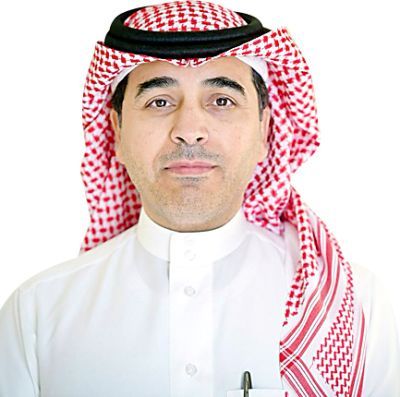
استمع إلى المقال
استمع
قبل يومين، وقّعت طيران «إير آسيا» مذكرة تفاهم مع مملكة البحرين لاستكشاف جعل المنامة مركزاً رئيسياً للشركة في الشرق الأوسط.
هذه الخطوة تحمل دلالات مهمة، نظراً لكون «إير آسيا» إحدى أكبر شركات الطيران الاقتصادي في العالم التي تمتلك نموذجاً تشغيلياً أثبت نجاحه، بأسطول يفوق 200 طائرة، وتعاقدات مؤكدة لشراء 367 طائرة من إيرباص، مع خطط طموحة للوصول إلى 600 طائرة خلال السنوات المقبلة.
الشركة العملاقة تخطط لخلق مسار يربط بين آسيا والمنطقة انطلاقاً من البحرين، عبر رحلات مباشرة منخفضة التكلفة، وكذلك خدمات شحن وتدريب وصيانة، إضافة إلى الربط بين سوقها الآسيوي ومحطات أوروبية مختارة، في محاولة لصناعة حضور أوسع في الشرق الأوسط.
هذه الخطوة ستخلق بلا شك تنافساً جديداً في سوق الطيران الخليجي، وهي منافسة صحية؛ لأنها توسّع السوق وترفع جودة الخدمات وتنوّع الخيارات أمام المسافر.
من المبكر الجزم إلى أين ستتجه المنافسة، لكن من الواضح أن نماذج الشركات الكبرى الشاملة لن تتأثر مباشرة، على عكس طيران العربية الجديد في الدمام، الذي يدخل اختباراً مبكراً لا يُستهان به، فوجود طيران مثل «اير آسيا» على بعد عشرات الأميال قد يهدّد نجاح التجربة الوليدة، وقد يدفع العربية للتوسّع أكثر واستباق التأثير، فالعربية نجحت في ترسيخ موقعها سابقاً، وعليها اليوم أن تقرأ التغيّرات القادمة في السوق، وتعيد تموضعها أمام لاعب كبير يمتلك شبكة ضخمة، وخبرة طويلة في الطيران الاقتصادي، وخطوط تشغيل تمتد عبر أكثر من 165 مطاراً حول العالم.
التغيير الأهم هو أن السعودية اليوم ليست متفرجاً في سوق الطيران، بل قوة صانعة للمستقبل، وإذا كانت دول المنطقة تتحرك لتأمين أو ترسيخ موقع لها في السباق، فالمملكة تعمل على رسم السباق نفسه، من خلال المطارات والناقلات والتمويل والشراكات والسياحة... أي من خلال بناء منظومة كاملة وليست شركة أو مطاراً منفرداً.
ما يجري اليوم ليس سباقاً على من يمتلك شركة طيران أو يبني مطاراً، بل سباق على من يصنع سوقاً، ويمتلك رؤية وبنية وتأثير.
الواضح أن الشرق الأوسط مقبل على مرحلة جديدة من صناعة الطيران، فالسعودية أطلقت قبل فترة أكبر استراتيجية طيران في تاريخها، مستهدفة الوصول إلى 150 مليون مسافر سنوياً بحلول 2030، وربط المملكة بأكثر من 250 وجهة حول العالم، يتقدم هذه الرؤية مطار الملك سلمان الدولي، الذي سيكون من أكبر مطارات العالم عند اكتماله، وكذلك جاءت طيران الرياض لتكون ناقلاً وطنياً جديداً بطموحات عالمية، فيما تواصل الخطوط السعودية وطيران ناس وأديل توسيع حضورها، أيضاً كان تأسيس شركة أڤيليس لتمويل وتأجير الطائرات إضافة نوعية، تعزز مكانة المملكة لاعباً محورياً في القطاع.
الطموحات السعودية لم تقف عند ذلك، بل امتدت إلى ملكية الأصول العالمية، مثل الاستحواذ على حصة في مطار هيثرو أحد أهم مطارات العالم، وكذلك الاستثمار في إير آسيا نفسها، حيث لعب صندوق الاستثمارات العامة الدور الأكبر في جولة جمع تمويل للمجموعة بقيمة 100 مليون دولار.
كل هذه الخطوات تعكس تحوّل المملكة من مجرد سوق تستقبل شركات الطيران إلى دولة تعيد تشكيل معادلة الطيران الإقليمي والدولي، وتبني مستقبلاً جديداً للسفر والاستثمار والسياحة.
إن الدول التي تعرف قيمة قطاع الطيران لا تبني مطارات ولا تؤسس شركات... بل تبني فوق ذلك مستقبلاً، تفتح من خلاله نوافذ جديدة على العالم.
Two days ago, AirAsia signed a memorandum of understanding with the Kingdom of Bahrain to explore making Manama a major hub for the company in the Middle East.
This step carries significant implications, as AirAsia is one of the largest low-cost airlines in the world, boasting a proven operational model, a fleet of over 200 aircraft, and confirmed orders for 367 Airbus planes, with ambitious plans to reach 600 aircraft in the coming years.
The giant company plans to create a route connecting Asia and the region starting from Bahrain, through low-cost direct flights, as well as cargo, training, and maintenance services, in addition to linking its Asian market with selected European stations, in an attempt to establish a broader presence in the Middle East.
This move will undoubtedly create new competition in the Gulf aviation market, which is healthy competition; it expands the market, enhances service quality, and diversifies options for travelers.
It is too early to determine where the competition will head, but it is clear that the models of major comprehensive companies will not be directly affected, unlike the new Air Arabia in Dammam, which is entering a significant early test. The presence of an airline like AirAsia just miles away could threaten the success of this nascent venture and may push Air Arabia to expand further and preemptively respond to the impact. Air Arabia has previously succeeded in establishing its position, and today it must read the upcoming changes in the market and reposition itself in front of a major player with a vast network, extensive experience in low-cost aviation, and operational routes extending across more than 165 airports worldwide.
The most important change is that Saudi Arabia today is not a spectator in the aviation market, but a force shaping the future. While countries in the region are moving to secure or solidify their positions in the race, the Kingdom is working to define the race itself, through airports, carriers, financing, partnerships, and tourism... essentially by building a complete ecosystem rather than just a single airline or airport.
What is happening today is not a race to own an airline or build an airport, but a race to create a market, possessing vision, infrastructure, and influence.
It is clear that the Middle East is on the brink of a new phase in aviation. Saudi Arabia recently launched the largest aviation strategy in its history, aiming to reach 150 million passengers annually by 2030, connecting the Kingdom to more than 250 destinations around the world. Leading this vision is King Salman International Airport, which will be one of the largest airports in the world upon completion. Additionally, Riyadh Air has emerged as a new national carrier with global ambitions, while Saudi Airlines, Flynas, and Adel continue to expand their presence. The establishment of Availis for aircraft financing and leasing also represents a qualitative addition, enhancing the Kingdom's position as a pivotal player in the sector.
Saudi ambitions do not stop there; they extend to global asset ownership, such as acquiring a stake in Heathrow Airport, one of the most important airports in the world, as well as investing in AirAsia itself, where the Public Investment Fund played a major role in a funding round for the group worth $100 million.
All these steps reflect the Kingdom's transformation from merely a market receiving airlines to a country reshaping the regional and international aviation equation, building a new future for travel, investment, and tourism.
Countries that recognize the value of the aviation sector do not just build airports or establish airlines... they build a future that opens new windows to the world.
ملحوظة: مضمون هذا الخبر تم كتابته بواسطة عكاظ ولا يعبر عن وجهة نظر مصر اليوم وانما تم نقله بمحتواه كما هو من عكاظ ونحن غير مسئولين عن محتوى الخبر والعهدة علي المصدر السابق ذكرة.






